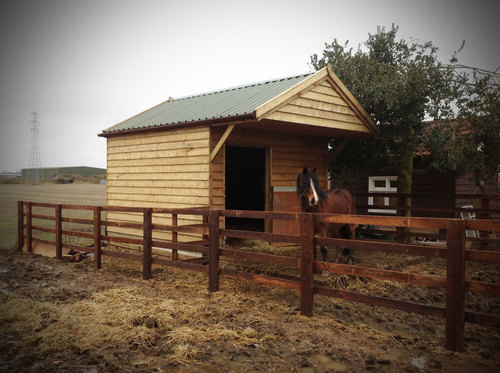High quality fencing provides a safe, secure environment for a horse or pony
Here at Dodd & Co, we are all about animal welfare. We are farmers and horse owners ourselves, so we are fully aware of the importance of getting the environment within which animals are kept as safe and secure as possible.
Put it this way, an expensive animal should be surrounded by a quality fence. The fence protects everything within the paddock or field as well as keeping undesirable visitors out. It also needs to be a durable fence because horses, ponies, donkeys, cows, sheep and any other animal will test a fence to its limits. Pawing, butting, kicking, scratching against the posts – no fence is going to get an easy ride when animals are involved.
A classic mistake is to keep the existing fencing because it ‘looks okay’. You must make sure it is fit for purpose. A fence that is a bit rickety might be good enough to keep a docile cow in but it is unlikely to withstand a large horse leaning on it.
This article focuses on the fencing needs of an equine operation. The act of fencing in horses is contrary to their very nature. As free-ranging herbivores, horses have an instinctive phobia of being confined, and even centuries of domestication are not likely to convince them that the enemy does not lurk behind every tree. When in a panic, horses will try to jump over, or run right through, a fence - no matter its type - in an effort to escape from real or imagined predators.
One of the biggest concerns and costs among horse owners is injury to the animal, often caused by faulty fencing. Barbed wire is a no-no for horse fencing as it will easily tear their delicate skin. Likewise, sheep netting can result in nasty injury if a horse or pony get their feet caught up in loose bits of the netting.
This fencing will keep small ponies in and rabbits and badgers out
The cheapest option is an electric wire or tape – an electric wire along the top of existing fencing that keeps horses and ponies from pushing against the wooden rails, wall or other fencing. Electric tape is preferable to wire as it is more visible to both the animal and people. Woven tape can be used with a post and stock wire fence for a safe and secure option. Make sure the fencing stands to a height which cannot be jumped but also bear in mind the possible need for lower levels of wiring in the case of foals, which may scramble under the wire. In this case two electric wires at appropriate heights may be needed.
If you are using electric fencing, always remember to charge the battery regularly or use a mains fencing unit. Electric fencing is particularly useful for temporary pastures.
Stallions present their own difficulties, particularly if their paddock borders a field with other males or breeding mares in it. Fences may have to be as high as six foot to prevent the stallion jumping into the next field. Also be aware of potential escape issues when you introduce a new animal into the paddock. Well-established, quiet animals might not challenge the fence, a new member or a young horse might very well take a running jump.
The best option for more permanent fencing is a post and rail system. The fencing will need high quality, properly treated timber and the strainer posts must be strong enough to support the post and rail system. As a minimum requirement, the top rail of the fence should be level with the eye of the tallest horse in the paddock as he holds his head up. That will act as a deterrent to jumping the barrier.
The thing to remember with horse fencing is to constantly check it for fault and to try to stay one step ahead of your equine escape artists. Contact Jamie Dodd on 07766 815830 for advice on your fencing needs.




